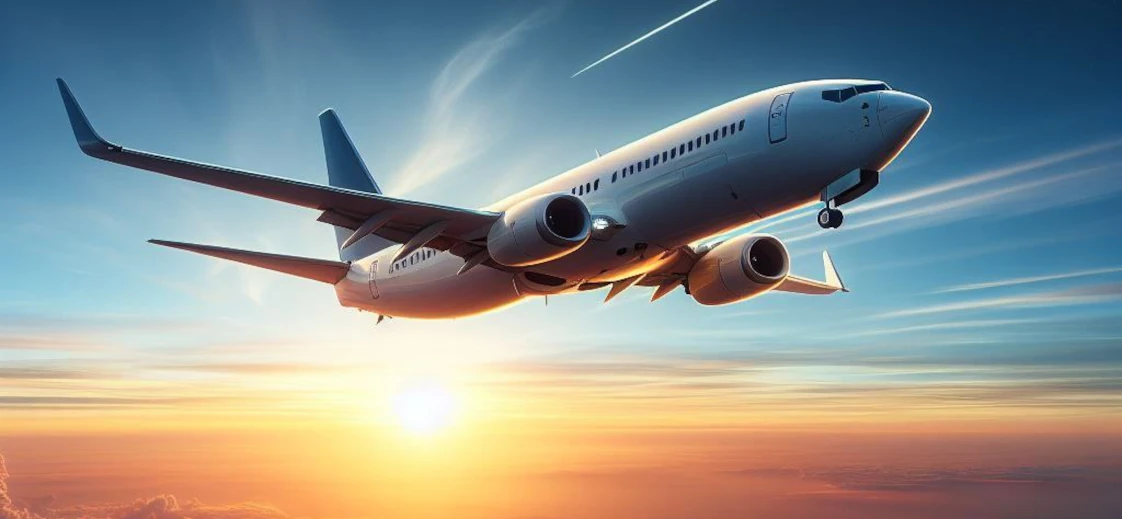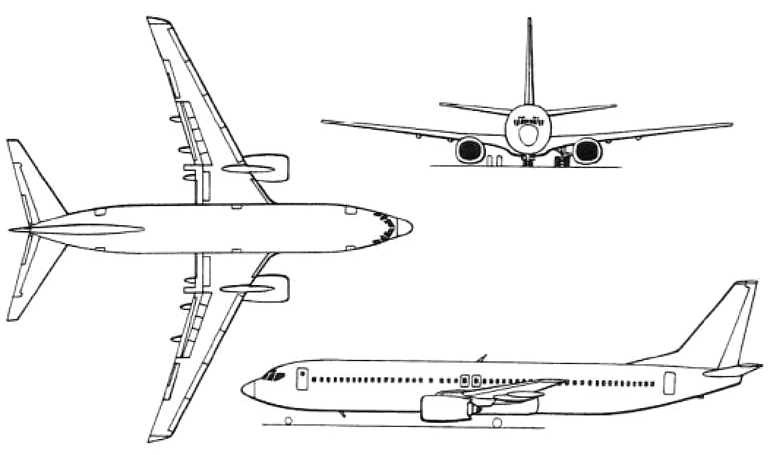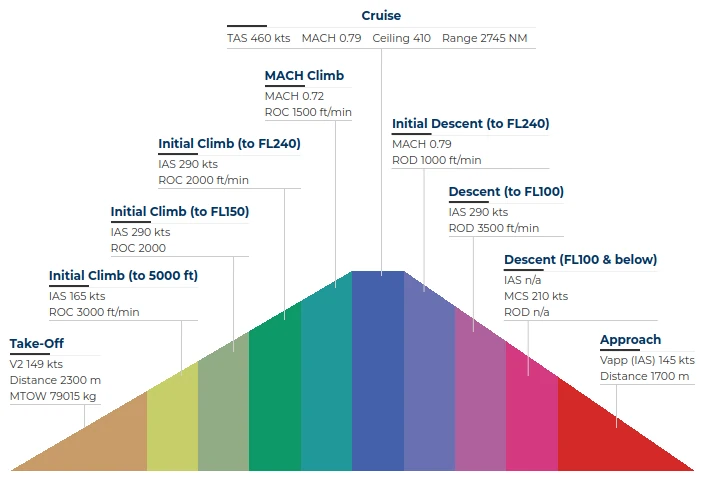
Boeing 737-900 Overview
Boeing 737-900 stands out as the largest member of the third generation within the 737 family. Operating as a narrow-body passenger aircraft, its versatility extends to short-haul and medium-range flights, showcasing a distinctive capability to accommodate larger cargo volumes through its modified cargo compartment.
Belonging to the Boeing 737NG (Next Generation) series, this aircraft presents itself as an elongated variant of the 737-800 model, boasting the capacity to seat up to 189 passengers. Despite its 2.6-meter increase in length compared to the Boeing 737-800, passenger seating is restricted due to a shortage of emergency exits.
The Boeing 737 900 comes with a range of advantages, not only in its augmented cargo compartment capacity but also in the incorporation of advanced technologies, ensuring both efficiency and safety during flights. It has emerged as the preferred choice for airlines seeking to deliver comfort and efficacy on their medium and long-haul journeys. Crafted in accordance with contemporary demands of the aviation industry, the Boeing 737-900 maintains its position among the leading models in its category.
Features of the Boeing 737-900
The Boeing 737-900 with winglets is an evolution of the famous Boeing 737 family of narrowbody passenger airplanes. Boeing 737-900 Winglets are innovative aerodynamic improvements on the wing tips that help reduce air resistance and improve fuel efficiency.
The Boeing 737-900 airplane offers increased range and capacity compared to its predecessors. Boeing 737-900 (winglets) add not only cosmetic elegance but also help reduce vortex drag, which in turn improves fuel economy. These devices, which resemble small «winglets» on the tips of wings, represent one way modern aircraft designers are improving flight efficiency and reducing environmental impact.
Fuel-Efficient Operation
The Boeing 737-900 excels in fuel efficiency, thanks to its state-of-the-art CFM International CFM56-7B26 engines. This not only streamlines operational costs for airlines but also contributes significantly to environmental sustainability.
Cutting-Edge Technological Features
This aircraft is equipped with cutting-edge technologies, encompassing automated control systems and modern electronics, ensuring a seamless blend of efficiency and safety throughout the flight.
Adaptable Flight Schedules
The Boeing 737 900 stands as an ideal choice for various routes, showcasing its versatility. Its ability to execute both short and medium-range flights positions it as a strategic selection for airlines aiming to optimize and diversify their flight schedules.
History of Boeing 737 900
The inaugural flight of the Boeing 737-900 took place on August 3, 2000, with commercial operations commencing on May 15, 2001, with Alaska Airlines.
Designed as a narrow-body passenger aircraft, the Boeing 737-900 aimed to replace the Boeing 757-200 and compete with the Airbus A321. Boeing initiated the development of the 737-900 in April 1997, using the 737-800 as a base and elongating the fuselage by 2.64 meters, reaching a length of 42.11 meters. Consequently, the new aircraft provided 9% more passenger seating and 18% more cargo space compared to the 737-800.

However, the door layout and emergency exits on the fuselage remained consistent with the 737-800, following a 2+2 configuration on both sides. The number of doors for safe passenger evacuation was not increased, as required by the U.S. Federal Aviation Administration. Therefore, the passenger capacity of the aircraft was significantly reduced from the stated 215 passengers to 189 (matching the 737-800), not due to design flaws but due to U.S. regulations. These limitations hindered the basic 737-900 model from competing equally with the Airbus A321. The initial 737-900s experienced limited demand, and only 55 aircraft of this modification were produced.
In August 2006, Boeing introduced a revamped version, the Boeing 737-900ER (ER — Extended Range), addressing the issue by adding an extra pair of doors, increasing passenger capacity to 215 seats. Additionally, improvements were made to the takeoff weight and flight range. Production of the model continued from 1997 to 2019.
Boeing 737 900 Specifications
Passenger Cabin
| Crew | 2 pilots |
| Number of Passengers | 215 |
Dimensions
| Length (M) | 42.10 |
| Height (M) | 12.60 |
| Wingspan (M) | 34.32 |
| Wing Area (sq.m) | 124.58 |
| Fuselage Width (m) | 3.76 |
| Cabin Width (m) | 3.53 |


Weight
| Empty Operational Weight (kg) | 42,460 |
| Max Takeoff Weight (kg) | 85,139 |
| Max Landing Weight (kg) | 71,350 |
Flight Data
| Flight Range (km) | 5,926 |
| Cruising Speed (KM/H) | 936 |
| Maximum Speed (KM/H) | 978 |
| Takeoff Length (M) | 2,408 |
| Runway Length (M) | 1,704 |
| Engines | 2 × CFM International CFM56-7B26 |
| Engine Thrust (kN) | 2 × 117.3 |
| Max Fuel Capacity (L) | 26,035 |
| Max Flight Altitude (M) | 12,500 |
Modifications Boeing 737-900
Boeing 737-900ER (Extended Range): This modification was designed to increase the range of the airplane. It includes larger fuel tanks, allowing for longer flights. Differences may also include improved engines.
Boeing Business Jet (BBJ) 3: The BBJ is the corporate version of the airplane. The BBJ 3 is based on the Boeing 737-900ER and provides a luxurious interior as well as the ability to customize the cabin to suit the owner’s needs.
Boeing 737 MAX 9: This is a member of the Boeing 737 MAX family, which includes improved engines and other innovations to improve efficiency and fuel economy. It is important to note that the 737 MAX has faced safety issues and had its flights temporarily discontinued, but Boeing has been working on updates and improvements.
Boeing 737-900 Seat Map
The Boeing 737 900 is similar to the 737-800, but has a fuselage lengthened by 2.8 meters. Pilot equipment is similar to that used on the 777 series with six color TFT displays.
The passenger cabin of the airliner has a configuration typical for Boeing models. The cabin has business and economy class seats, a checkroom, a toilet and a small buffet. The cabin has a small width of 3.5 meters. The checkroom is located in the front part of the cabin, while the buffet and toilet are located in the rear part. The Boeing 737-900 seating located at the edges of the cabin are equipped with folding armrests. This is provided for easy passage of passengers who are seated near the portholes and walls.
The Boeing 737-900 is typically offered by airlines in a variety of cabin configurations, and most focus on economy and business classes, but do not always include first class. Many airlines, instead of Boeing 737-900 first class, offer extended business class or premium economy class.
When planning your trip, be sure to review the Boeing 737-900 seat map to choose the optimal seat configuration for your comfort.
Boeing 737-900 Business Class
Business class is located in the front part of the airplane. There are 14 comfortable seats, a total of 4 rows. There is 84 centimeters of free space between passenger seats. The seats in business class are characterized by increased comfort. The stewardesses pay special attention to make the flight as comfortable as possible. There is a separate toilet for business class passengers.
Economy Class
After the Boeing 737-900 Business Class, there are Economy class seats. Economy Class on board Boeing 737 900 provides an optimal combination of comfort and affordability for all passengers. Located at the rear of the aircraft, Economy Class offers an affordable option for those who appreciate reasonable value for money.
The Boeing 737-900 Seats in Economy Class are ergonomically designed to provide support for passenger comfort during long flights. Row spacing is optimized for maximum space, and attention to detail makes for a pleasant and comfortable flight. The seats are arranged in three rows on each side of the aisle, and the distance between them is 76 centimeters. The seat is 44 cm wide and has a backrest that reclines 113°.
A variety of in-flight entertainment options are provided on board the Boeing 737-900 in Economy Class, allowing passengers to enjoy movies, music or games during the flight. In addition, flight attendants are ready to offer a variety of food and beverage options to meet the needs of different passengers.
Comparison of Boeing 737 900 Seat Maps
| Airline | Classes / Configuration | Total Seats |
|---|---|---|
| United Boeing 737-900 | First Class / 2-2 Economy Plus / 3-3 Economy / 3-3 |
179 |
| Alaska Airlines Boeing 737-900 | First Class / 2-2 Economy Premium / 3-3 Economy / 3-3 |
178 |
| KLM Boeing 737-900 | Business / 2-2 Economy Extra Economy / 3-3 |
178 |
| Korean Air Boeing 737-900 | Prestige / 2-2 Economy / 3-3 |
188 |


